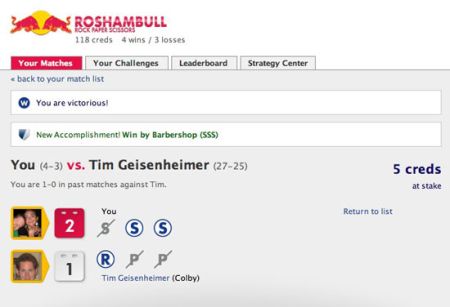von Roland Hachmann | Juni 24, 2007 | Ad News, Blog, Digital Marketing, Online Advertising, SEO / SEA
Google has launched their performance based „pay per action“ ad network and opened it up to selected advertisers, writes clickz.
Some believe the pricing model will reduce the impact of click fraud since PPA ads won’t fall prey to automated bots designed to click ads to boost keyword prices or generate more revenue for AdSense publishers. Instead, an actual action must be performed by the user in order for the publisher and Google to be paid by the advertiser.
Yes, there might have been fraud, but why should I participate in the business risk of the advertiser? What if the product is unsellable? What if the creative is really bad and attracts people who click (which would be good for publishers in a way), but will never buy the product (or request info, or whatever the „paid action“ will be).
But Google solved this, too:
Publishers in the AdSense network can search for available CPA ads and review them before choosing whether they want to accept them for placement on their sites. The PPA ads will only appear on AdSense publisher sites, not in Google’s search results, as CPC buys do.
This whole thing is really bad news for all the affiliate networks out there…
von Roland Hachmann | Juni 18, 2007 | Blog, Digital Marketing, Marketing, Online Advertising, Social Media Marketing
Whoever doubted that widgets can be a fantastic tool for marketing? Well, probably anybody who didn’t think that a widget can actually provide a fun „anything“ sponsored by a brand.
Here is a short article about a Red Bull Widget that seems to be the killer app for all those people bored at the office (during lunch break only, of course).
It is an online version of Rock / Paper / Scissors. You can play this via the widget against other people from the facebook network. Great idea!
This might be the start of a whole new stampede of marketing widgets on facebook (and others).
von Roland Hachmann | Juni 13, 2007 | Blog, Online Advertising, SEO / SEA
Adverblog just pointed me to a presentation by Zoran Savin of IAB Europe on the latest figures of ad spend in Europe. Search dominates, still. I am not surprised. And email is very low, unfortunately. (I like email marketing!)
[At this point, I unsuccessfully tried to embed the slideshow from slideshare.com. Does anybody have a tip for embedding these into wordpress?]
(And I am once again amazed at the things you can get at slide share!)
von Roland Hachmann | Juni 10, 2007 | Ad News, Blog, Digital Marketing, Marketing, Online Advertising, Social Media Marketing
Pete Blackshaw and Max Kalehoff have put together a list of 10 principles for ad campaigns leveraging consumer generated content, which are, in short:
1. Connect The Program To Larger Business Goals
2. Keep It Authentic
3. Be Transparent
4. Encourage Advocacy
5. Empower Syndication
6. Tap The Long Tail
7. Capture The Moment
8. Be Consistent
9. Embrace Criticism And Deprecation
10. Move From Campaign To Platform
You can find details to each point either here or here.
I particularly liked the points about making sure that whatever you do fits into a wholistic strategy, as well as making sure that you take the possible long term effects into consideration. With all the hype around this topic, I sometimes fear this tends to be neglected…
von Roland Hachmann | Juni 8, 2007 | Ad News, Blog, Digital Marketing, Online Advertising
Joost is apparently testing new ad formats:
In addition to in-stream 15- and 30-second spots, the company is serving ads in „bug“ format. Bugs are brands that appear as floaters in the corner of the viewing screen. These typically appear shortly after an ad for the floating brand has just aired.
Clicking on the bug opens a new browser window that takes viewers to the product.
Interactive television with the corresponding interactive advertising is already in use by some stations (for example Sky in the UK). You press a button whenever a red dot appears in a corner and then you get further information. But in the case Joost, you can send them deep into the web, onto landing pages, rich media experiences, contact forms, etc. This will clearly change the way TV advertising is perceived and produced!
And there is even an additional benefit:
Ads will largely be targeted to viewers based on personal and demographic data that users entered when they first registered with Joost.
Somehow I don’t think they’ll stick with only personal and demographic data. How about behavioural targetting? Measure and track what they watch and what they have clicked on in the past (and hope that it is still the same person sitting in front of the screen).
von Roland Hachmann | Mai 24, 2007 | Ad News, Blog, Digital Marketing, Online Advertising, SEO / SEA
Latest news is: Google is now testing in-Stream Video ads:
Ad creative will be less than :30 and made skippable for users. Publishers will be able to select which videos to monetize, and track their performance using AdSense. Publishers can also choose where the ads will appear within the videos. Akin to standard AdSense deals, ad revenue will be split between the website publisher and Google.
And – though slightly unrelated: They now also sell TV Ads, as found on their AdSense ads.
Seems like they’re really moving into video ads in many ways now.


 Wo ich sonst so bin...
Wo ich sonst so bin...